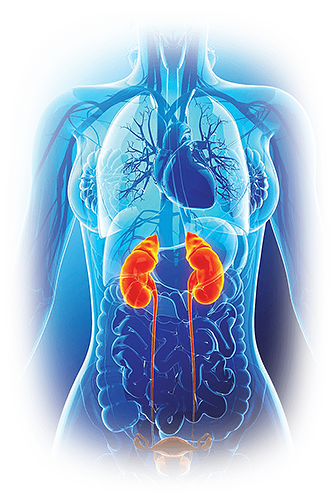Login
For Clinician Providers
For Clinician Providers
For Patients
Modified Lyme Disease Testing Process Improves Early Diagnosis
The U.S. Food and Drug Administration (FDA) recently cleared the expanded use of four current Lyme disease tests, allowing these assays to be used in specific combinations for detecting and confirming the illness. The new modified testing protocol eliminates the need to run a specialized test called an immunoblot (Western blot). Ultimately, this change is anticipated to simplify the interpretation of Lyme disease test results and provide improved detection of Lyme disease earlier on following infection.
Lyme disease is primarily caused by infection with the bacteria Borrelia burgdorferi in the United States and other closely related Borrelia species found throughout Europe and Asia. The disease is spread to humans following a bite from an infected black-legged tick. Transmission of the bacteria from the tick to a human requires at least 36 hours of tick attachment. Signs and symptoms of the illness include fever, headache, and fatigue and may include a “bull’s-eye” rash that develops at the site of the tick bite.
Healthcare practitioners can diagnose Lyme disease based on the presence of a bull’s-eye rash, so testing of people with this rash is not needed nor recommended. However, the rash is only observed in about 70% to 80% of people with Lyme disease. For those without the bulls-eye rash, who have other symptoms consistent with Lyme disease and who have had a known tick bite or live in or have visited an area where black-legged ticks are common, lab testing should be performed to help diagnose Lyme disease.
Lyme disease is typically treated with antibiotics taken as pills for 10 to 14 days. If not diagnosed and treated in the early stage of infection, the bacteria can spread to the joints, heart, and central nervous system, causing more severe symptoms (for example, muscle and joint pain, facial weakness and paralysis [Bell’s palsy], numbness and pain in arms and legs) and may require longer courses of antibiotics. However, Lyme disease can be difficult to diagnose because the symptoms can sometimes be vague or confused with those of other illnesses.
The traditional testing process for Lyme disease (called the standard two-tiered testing algorithm or STTTA) has been in place since 1995 and requires two different lab testing methods. Both methods look for the presence of antibodies in the blood that are produced by the immune system in response to the infection.
- Blood samples are first evaluated using a test called an enzyme immunoassay (EIA). A negative result by the EIA indicates that the person tested does not have any detectable antibodies to B. burgdorferi.
- If the EIA is positive or equivocal (not clearly positive or negative), the blood sample is next tested using a second method, an immunoblot, to confirm the diagnosis.

What is most notable with the four Lyme disease tests from Zeus Diagnostics, which are EIAs, is that the FDA has cleared them to be used in combination and Lyme disease testing can now be performed without the immunoblot method. Instead, following an initial positive or equivocal EIA, confirmatory testing can be performed with a second EIA that differs in composition from the initial EIA. (This is called the modified two-tier testing algorithm or MTTTA.)

Credit: Elitza Theel, PhD, D(ABMM)
According to the FDA, the results from this modified two-tier testing algorithm are just as accurate as the standard two-tier testing algorithm. In fact, clinical trials’ data provided by the manufacturer to the FDA showed a better ability of their modified testing process to detect antibodies to Lyme disease during early stages of infection as compared to the standard testing process.
Additionally, the MTTTA is an improvement because the result from immunoblot testing that is the confirmatory step for the STTTA may be harder to interpret compared to the EIA test, require more time to complete, and may be falsely negative, especially during the first few days or weeks following initial exposure. The immunoblot is a complex test and many laboratories do not perform this testing in-house. The blood sample must be sent to a reference laboratory, which may delay getting the confirmatory result.
Prompt testing and diagnosis of Lyme disease is especially important as the disease becomes more common and widespread. According to the Centers for Disease Control and Prevention (CDC), there were 42,743 confirmed and probable cases in the U.S. in 2017 (the last year for which the CDC has data), an increase of 17% over 2016.
“Lyme disease can have a devastating impact on patients. With [this approval], clinicians have a new option to test for Lyme that is easier to interpret by a clinical laboratory due to the streamlined method of conducting the test,” said Tim Stenzel, M.D., Ph.D., director of the Office of In Vitro Diagnostics and Radiological Health in the FDA’s Center for Devices and Radiological Health, in a news release. “These tests may improve confidence in diagnosing a patient for a condition that requires the earliest possible treatment to ensure the best outcome for patients.”
Not long after the FDA clearance, the CDC updated their Lyme disease testing recommendations to include this newly-approved modified two-tier testing option. The approval may likewise impact testing guidelines from other health organizations. For example, the Infectious Diseases Society of America (IDSA), American Academy of Neurology (AAN), and the American College of Rheumatology (ACR) have, for the first time since 2006, updated their Lyme disease guidelines. The draft guidelines are open for public comments through September 9, 2019 and are expected to be finalized later this year.
Source:
https://labtestsonline.org/news/modified-lyme-disease-testing-process-improves-early-diagnosis



